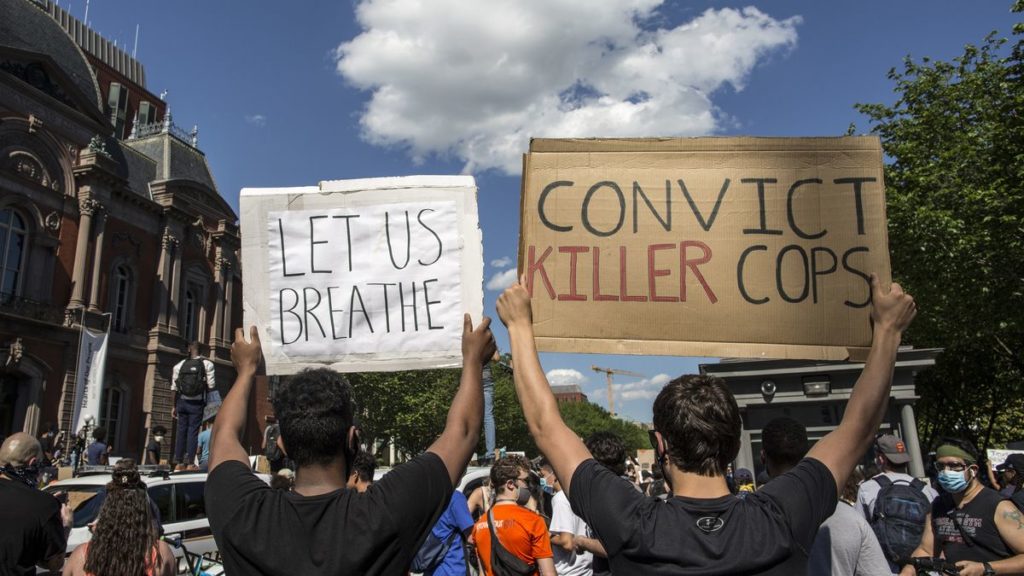
What’s different this time? Why are the protests having such a major impact?
Well, in terms of opinions about the status quo, a lot has changed. However, there is one major difference, a difference that affects every social event, every public demonstration, every situation involving police/civilian conflicts.
The difference is not the particulars surrounding the happening. Yes, in many cases there are obvious wrongs, and in some cases there are grey areas where it is hard to determine right and wrong. But, regardless of time of day. Regardless of location. Regardless of the nature of the event. None of that is the significant difference.
The difference is twofold: 1. is technology, the other is 2. participation of protestors.
In many of these cases, there are videos of conflicts with the police that are broadcast nationally and internationally. In previous years, it was typical that there would be conflicting stories about what happened.
Particularly when a person is killed by the police, follow-up investigations and even the rare court cases, were dependent on witnesses, with the police being considered not only the expert witness but also their report considered the defining explanation of what happened.
Unfortunately, police versus public engagements usually devolved not only into conflicting versions, but the police were most often adjudicated as expert/truthful witnesses. In other words the courts generally accepted that the police versions and discounted the public’s version. Particularly when the issue involved Black people, regardless of the race of the police officer, the civilian involved was usually criminalized. The encounter quickly, or eventually, was characterized as the police against a violator of law and order.
Technology, particularly the video camera on the majority of cell telephones, literally offers an incontrovertible alternative viewpoint that can literally trump the so-called expert testimony of the police.
In terms of public perception of the police, while video testimony is significant, the critical change is not solely technology. The most significant change is the participation of ordinary civilians as protestors, a participation that is fed by the large number of people who, because of the virus, are now home, beset by “cabin fever”, and who now spend a more than ordinary time watching cable television, which over the last half year have been consumed by stories about first the virus and second, protests of police activities, particularly the murder of Black victims.
The vast majority of protestors would “normally” not be in the streets. However, because of the virus lock-downs, literally hundreds of thousands of people are able to protest, when they otherwise might be at work, at school, or elsewhere.
Moreover, protestors are no longer mostly aggrieved minorities. The average American who has never run afoul of the police, not even for a traffic violation, now feel impelled to join in protests against systemic oppression.
What might cause this massive participation of people who heretofore had not had a history of protesting police activity? The answer is not simply an opposition to the behavior of the police. Rather, the mass of protestors are also angry not only about a specific incident regardless of how egregious, the protestors are also upset about the virus, the lock-downs, and the major down turn of their personal economic situations.
Consider that a number of the protestors are people who are recently unemployed with no assurance of when, if ever, they will be able to return to work. Perhaps for the first time in their lives, protestors are questioning the fairness of the system overall, especially the fairness of and the “MAGA” philosophy of the Trump administration vis-a-vis the majority of people in the world, a majority which is overwhelmingly non-white.
Because people who are under economic stress and strain are all over the country, and because police assaults continue, we have real and imminent conflict situations that must be addressed. These police vs. civilian confrontations take place at the same time that the ordinary American citizen must now deal with public health/pandemic issues, financial issues (which are exacerbated by the extreme costs of health care), and governmental affairs under Trump, which include wholesale repeal of Obama-era rules and regulations, as well as multiple, documented examples of lies and deceptions told by President Trump and his administration. Millions of us perceive our individual as well as our social lives to be under assault.
Either we confront our numerous problems head on and make positive social change or we will be consumed by the negative consequences of our perilous existence. Regardless of what we do or don’t, for sure, nothing will be as it was.
Like Sam Cooke presciently sang “a change is gonna come”. The nature of our inevitable life changes will be determined to a large degree by our actions here and now. Thus, most of us viscerally understand that today is the time to act. Moreover, because of the confluence and overlap of diverse individual and social issues, a significant percentage of us are “fire up” and ready to engage in activism to address the numerous problems of the day, problems which transcend the limits of race, gender, education, and economic status. For the first time in a long time, most Americans perceive that many, if not all, of us are indeed beset by common problems.
